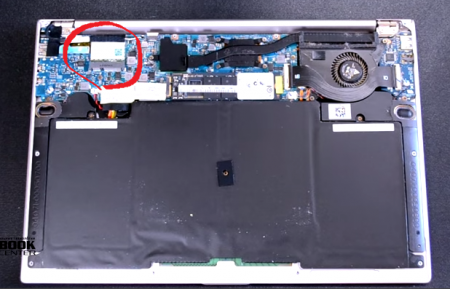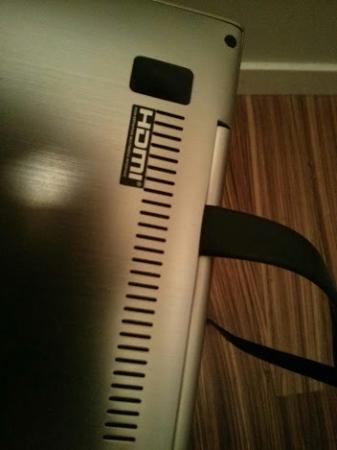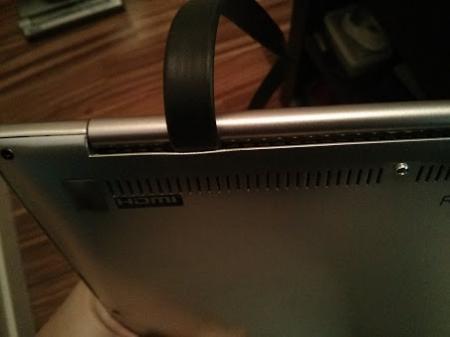
Kaiyoti
-
Posts
8 -
Joined
-
Last visited
Content Type
Profiles
Forums
Downloads
Posts posted by Kaiyoti
-
-
OK, the problem is your BIOS is setting your eGPU as the primary display upon detecting it at boot, and disabling the iGPU. Without the iGPU as the primary display you won't get Optimus features: accelerated internal LCD mode and x1 PCIe compression.
So the simplest fix for you would be to use the PCI Reset Delay switches on your eGPU adapters to delay assertion of the eGPU until *after* the bios has initialized. That way the iGPU will be set as the primary active device. Those are very small slider switches that exist on both eGPU adapters: PE4C and EXP GDC.
Once you get that going, would you mind completing your guide with 3dmark06, 3dmark11 and 3dmark13 benchmark runs on an external LCD and posting their links.
Asus Zenbook is a popular ultrabook. We have very few ultrabook eGPU implementations so thank you for taking the time to post yours.
Thanks, I will give this a run tomorrow and provide the benchmarks. Though I feel like the scores will be very low since this is a pretty low end card, I've been contemplating on getting a GTX 970/980 maybe even 980ti so I can rerun the tests if I do get those cards.
-
Done, if you need more info I can add more.
-
Pictures
I don't want to risk taking images of the internals with the mini pcie attached because the laptop screws (torx) got weaker and weaker since I started this. The highlighted area is the mini pcie slot. The top of the image is the hinge of the laptop and I've managed to file the vent at the bottom side a little for the cable to run out and now have the laptop lid screwed back in.
This is what the finished product looks like:
System
13" Asus Zenbook UX31A-DB51
i5-3317U (Dual Core) CPU
4GB DDR3 RAM
Intel HD 4000 iGPU
N/A dGPU
Windows 8.1 Pro 64-bit
eGPU parts
PE4C-PM060A 2.1 adapter
DELL DA-2 220W for Optiplex PSU
BenQ E2420HD external LCD
EVGA GTX750 SC video card
Power on process
Issues
Maybe I haven't dug hard enough but a lot of articles I read seems to suggest that internal lcd is automatic when you change Windows Projection option or whichever port is connected, but that's not the case for me.
I have a PE4C as well as an EXP GDC Beast. I'm able to boot my Asus Zenbook UX31A laptop with the GTX 750 card but only through external monitor connected to the card. After I boot, I no longer see Intel HD4000 in my device managers. Nor does it detect my laptop screen. This is running Windows 8.1 Pro.
Are there more work for me to get internal lcd working? Or is my laptop not supported? I tried going into the bios and there's no option for enabling/disabling built in VGA option.
Any help would be much appreciated.
Paul
-
Excuse me if this is a noob question but after I'm able to get my EXP GDC Beast working with my
Asus Zenbook Prime UX31A-DB51 (Intel Core i5 3317U (1.70GHz) 4GB Memory)
with a GTX 750 SC (non TI).
I can't seem to find any articles about getting Internal LCD to work, and the videos I watched all just assumed that you can turn off you can just change the monitor settings via Windows projection commands / or just by unplugging external monitor. This does not seem to work for me. It seems that it does not recognize my internal LCD as a screen option, nor is my intel hd 4000 showing up in the device driver list when I boot with EGPU.
Any help will be much appreciated.
Paul
-
Where do you want to place the eGPU? Just naked outside of the M350? Without additional power and a riser you might be able to make a GTX 750 Ti work that doesn't need additional power.
I actually happen to have a 750 that I can try that with.
-
Okay, thanks. I think I might just go with the mini pcie adapter in this case, I'm not expecting high end graphics gaming.
Paul
-
Short question: Are there any issues with external power usage when using riser cables?
So due to travel within the next few years, I'm currently rebuilding my machine into an ITX mini pc so it's easier to carry. I currently have i5 4670K and I'd like to use this in a M350 itx chassis with a 160W picopsu power supply. The TDP for the CPU is already 84W
This is the projected build
https://pcpartpicker.com/user/kaiyoti/saved/BZvhP6
As you can see based on the estimated power usage on load, this does not leave much room for PCIEx16 which can go up to 75W from my research. I have an AMD 7950 3gb card that I would like to use.
Am I out of luck or do I need a full sized PSU? Are there risers that can supply power as well... so like a PE4C but with a x16 source?
Otherwise I'd probably stick with an itx board with mini pcie, should still allow me to game on highish settings.
Any tips would be appreciated.





13" Asus Zenbook UX31A + GTX750@4Gbps-mPCIe2 (PE4C 2.1) + Win8.1 [Kaiyoti]
in Provisional Guides
Posted
@Tech Inferno Fan, the switch on the EXP GDC Beast unfortunately did not work. There were two settings CTD and PTD I tried combinations of either and both, none worked. I looked at the bios and there seems to be i/o security that includes "Wifi Network" unlocked, I set that to locked and tried booting with eGPU and that port no longer works, anyway I re-enabled it. I did a bit of reading and you have suggested to do the hotplugging method. It unfortunately doesn't work for me. After hotplugging, the egpu starts up but the laptop screen is blank, and the external monitor does not turn on.
My PE4C is loaned out at the moment so I can't test that one currently.